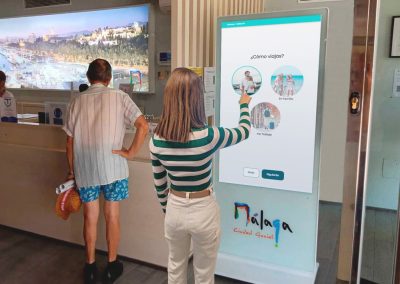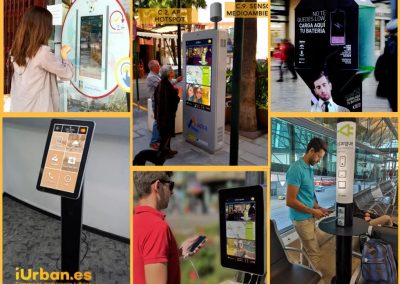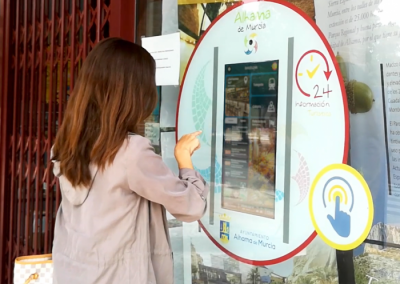HOW ARTIFICIAL INTELLIGENCE HELPS TOURIST INFORMATION CENTRES IN THREE AREAS
(Automating functions to focus on decision making)

Bastian is a boy who finds a book called “The Neverending Story” in a bookshop. Reading the book, Bastian realises that he is the only hope for the magical kingdom of Fantastica, which is being destroyed by The Nothing, an all-consuming dark force.
The book is written in three colours, black for the narrator, red for the voice of Bastian, the human boy reading the book, while green represents the voice of Atreyu, the boy’s alter ego as a young warrior sent to save the kingdom of Fantastica. We’re also going to write this post in three colours, red representing my personal vision and green indicating what artificial intelligence tells us about how to free up time for tourist advisers to make better decisions. So let’s take a look at the main roles that AI can play at tourist information centres.
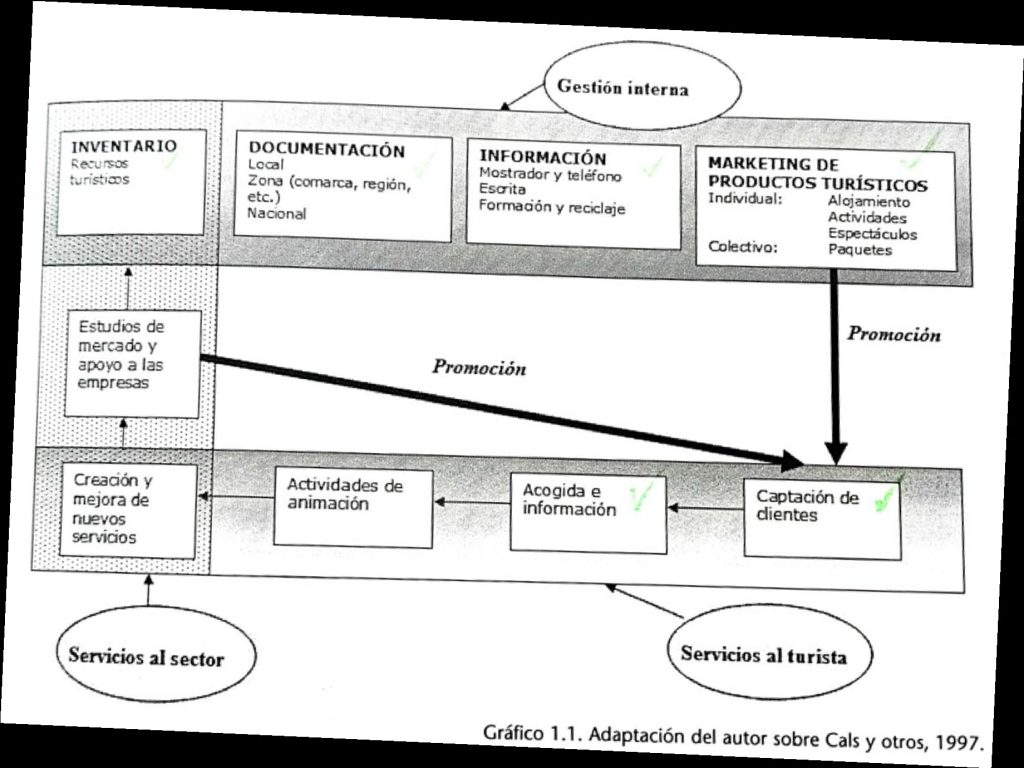
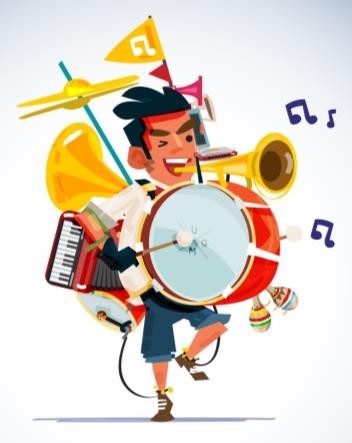
According to Candela de Cruz Romero (De Cruz Romero, 2014) “Tourist Information Centres are defined as those public services under and generally created by a Public Administration or in collaboration with other authorities, whose goal is the coordinated management of all the services related to visitor attention, guidance and advice, as well as to organise the coordination, promotion and marketing of tourist products in its geographical area”.
IS ARTIFICIAL INTELLIGENCE GOING TO TAKE YOUR JOB? This is the first fear that pops up in the head of many tourist advisers when the subject comes up, but this is far from the reality. What artificial intelligence can do is to make advisers even more valuable and help them make better decisions for their town or city. So let’s break down the seven main tasks of tourists advisers (as reflected in the book “Gestión de oficinas de turismo” (Tourist Information Centre Management) by Oriol Miralbell Izard) into three areas – you’re going to flip when you see the value that these veritable orchestra conductors have!
Tourist offices are divided into 3 areas
Internal management
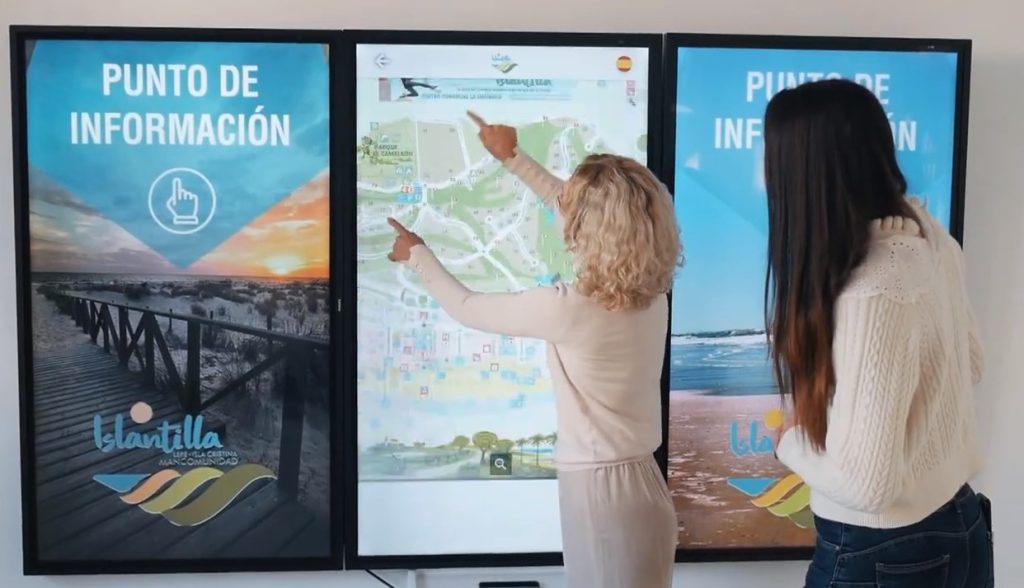
1. Inventory (tourist attractions) and documentation in several languages.
. Right now we’re working on developing the content manager for the City Council of Bilbao (its tourist information system) and one of the functions is to be able to catalogue and standardise all the content (images, videos, PDFs, texts, etc.) which can then be displayed or shared on the council’s website, social media, etc., all standardised under UNE 178503:2019. Smart tourist destinations. Semantics applied to tourism.
. Image analysis: AI can be trained to analyse images of tourist attractions, including historical buildings, monuments, museums, etc. It can then automatically identify these attractions and collect information about them, such as their location, characteristics and visiting hours.
. Text processing: AI can be used to process vast amounts of text, such as information on tourist events, site descriptions, travellers’ reviews, etc. AI can identify keywords and mine relevant information about tourism attractions, as well as translate them into any language.
. Social media analysis: AI can be used to analyse social media and collect information about tourist attractions. For example, AI can identify popular spots on Instagram and Twitter and collect information about them.
2. Tourist information and creation of tourist services. Production of brochures, posters, magazines, itineraries, maps and tourist guides of the destination to promote it and/or provide visitors with information.
. Currently, tools like GPT-3, based on internet searches, can recommend the most relevant content according to the type of traveller (buyer persona), which can help you to quickly create brochures and other materials. It can also create the copy describing the value proposition of your destination and marketing messages to attract more tourism.
. Data analytics: AI can be used to analyse large amounts of data, such as tourist preferences and behaviours, to create customised brochures and itineraries. For example, AI can analyse data from accommodation and activity bookings to identify common patterns and tourists preference and then create personalised itineraries based on this data.
. Machine translation: As mentioned above, AI can also be used to automatically translate tourism content into multiple languages, making it easier to create multilingual brochures and guides for all tourists.
3. Check the veracity of the information being handled. Destination quality control With so many new attractions and events events, it is easy to pull resources from the internet without having the time or tools to cross-check the information.
. Sentiment analysis: AI can analyse public opinion on the information provided by tourist information centres. This can be done by collecting and analysing data from social media, online comments and other sources of public opinion. AI can identify patterns in comments that point to the accuracy or inaccuracy of the information.
. Source analysis: AI can collect and analyse information from multiple sources, including newspapers, magazines and websites, to verify the accuracy of information provided by tourist information centres.
Tourist services
4. Attract tourists
. Counter and telephone. We’ve seen that a tourist information centre is any channel that represents a town or city, be it from a website, physical office or on social media.
. Does it make sense to continue providing information on a map? AI can help to further tailor the experience to the type of tourist based on a few questions and, with the help of the adviser, create a memorable itinerary. Tourists can see the itinerary before their visit to help them make the best decision about what they want to do, and information can be sent to their phones so that they can have the itinerary at their fingertips once they reach the destination. The goal is always to get on the tourist’s mobile phone to really get a better understanding of the content they use and where they’ve visited during their stay to later build tourist loyalty.
. How can we answer emails, WhatsApp messages and calls in an agile way if it’s just me or 2-3 people? AI can cover the digital channels and collect as much information as possible as auto-responders for email, WhatsApp and website contact, responding quickly to grab the tourist’s attention.
. Write. Personalise all information that’s sent.
. How can we personalise the experience when messages provide limited information? AI can ask tourists a bit more about them to create personalised stays by matching events and attractions that match the type of traveller or trip (for example, attractions adapted to people with reduced mobility or that allow pets).
. It can also send information an agile way without having to personalise each message by using a CRM that also logs tourist info, saving it in the database.
5. Tourist loyalty How to turn them into return visitors in the off-season?

. If I barely have time to do all the things that were shown in the graph at the beginning, how am I going to be able to contact people who have visited and personalise the message so that they come back? Are you crazy?
. What if someone else could do it for you? What if a “we miss you, hope to see you soon” message was sent out before the high season with photos of your most beautiful scenery? What if, just like do at restaurants, we ask visitors “Would you come back? Yes/No and why”? Do you think you’d draw in more visits? I’m telling you that you would.
. There are a number of ways that artificial intelligence can help tourist information centres attract more tourists, including:
. Targeted marketing: Information centres an use AI to analyse tourist data and design more effective and personalised advertising campaigns. AI can help identify the most effective marketing channels for reaching tourists and design marketing messages that are more relevant to them.
. Improve the quality of tourism services: AI can help tourism information centres improve the quality of the tourism services they offer, which can attract more visitors. For example, AI can be used to analyse tourist feedback and provide real-time information on tourist satisfaction and areas for improvement.
. Create innovative tourism experiences: AI can be leveraged to design new innovative tourism experiences that attract tourists. AI can help tourism authorities analyse emerging trends in tourist interests and design tourism services and activities that meet those needs.
. Immersive experiences: AI can help create immersive and unique experiences in the destination by harnessing technologies like virtual reality and augmented reality. These experiences can be an engaging way to motivate tourists to extend their stay and spend more in the destination.
Industry services
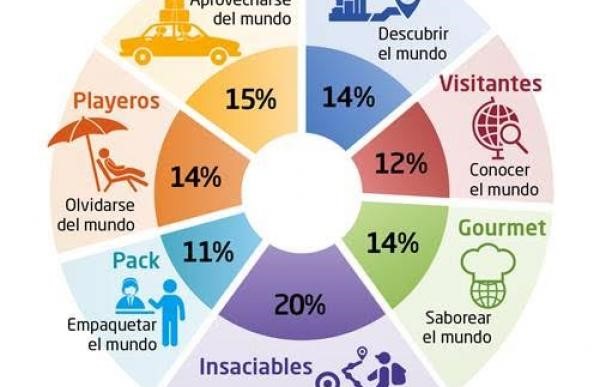
https://www.lainformacion.com/espana/que-tipo-de-turista-eres_e43gm4cq3tfisscvua0lo/
6. Market studies for sharing information with the industry’s private stakeholders.
. We asked ourselves in a town hall on the English Way (Camino Inglés): Are tourists not spending the night because there’s no interest in the destination or because there are no hotels? Pooling information with the private sector is essential, but collecting information and resources is so challenging that we can’t have real time information to anticipate the destination’s needs.
. On a weekly or monthly basis, AI can send all the requests, nationalities, profiles of the type of traveller to help us make business decisions. For example, a centre in Extremadura told us that there was only one winery in the municipality but the tourist requests were not being coordinated with tours. If this company had access to the nationality, tastes and profile of travellers, it could know their travel schedules and language and personalise the experience to increase the viability of the business or to expand its services.
. Data analysis: AI can help tourist centres analyse massive amounts of data from a variety of sources, including social media, travel blogs, hotel bookings and so on. This can provide valuable information about tourist trends and preferences, as well as the services and products they are seeking.
. Better communication: AI can help tourism information centres improve how they communicate with local businesses and organisations by automating processes like email management, arranging meetings and scheduling appointments. This can lead to enhanced efficiency and promote collaboration.
. Resource optimisation: AI can help centres optimise the use of resources like their staff and budget by identifying areas where improvements can be made and allocating resources more effectively.
7. Analyse the destination’s supply and demand, as well as comparative analysis with other destinations (benchmarking). Do a “SWOT” analysis.
. Thanks to artificial intelligence, destinations can now track not only the tourists who search for them but also those who search for the surrounding towns, that is, destinations can identify the traveller profile (searches on Google and social media) that is interested in the destination. They do this to see how they rank with respect to the competition, using keywords to craft campaigns in source countries to better position their location.
. Determining the services available in the region and making a “SWOT” to identify the strengths and weaknesses compared to other locations is also essential, and AI can help gauge visitors’ opinions and feelings, as well as analyse the feasibility of targeting a new “buyer persona”, focusing on this profile to set the destination apart from neighbouring ones.
. Predict tourist behaviour: AI can analyse the past behaviour of tourists and predict their future behaviour. This can help tourist information centres design more effective marketing campaigns and better plan activities and events in the destination to attract tourists during the off-season.
Ultimately, AI can help us meet these challenges set by SEGITTUR for destinations.
. Challenge 1: Capture strategic tourist segments for the destination
. Challenge 2: Increase travellers’ spending and satisfaction at the destination.
. Challenge 3: Build visitor loyalty
. Challenge 4: Strengthening public-private partnerships and industry competitiveness
. Challenge 5: Manage the strain that tourism places on public services
. Challenge 6: To provide tourism-based social opportunities and benefits for the destination
. Challenge 7: Anticipate and manage negative impacts on the natural environment and civic space
. Challenge 8: Have the technological systems and management structures in place to address challenges
And like Bastian in the Neverending Story, lose the fear of entering an unknown world (artificial intelligence), and become a warrior (Atreyu) to help transform your destination like you’ve never imagined before.
Have any questions?
We’re here to help.
Remember: Consultations are free. We’ll get back to you in 24 business hours

